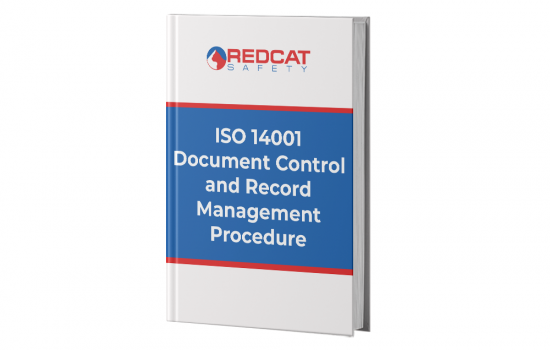What is a Document Control Procedure?
A document control procedure outlines the process and methods for the administration, development and maintenance of documents. This is a requirement for compliance with ISO 14001 environmental management systems. The objective of a document control procedure is to ensure that all relevant ‘documented information’ and its associated organizational knowledge is reviewed and approved by authorized personnel before issue. Typical documents that are controlled by a document control procedure can include, but are not limited to:
- ISO 14001 management manuals, procedures and related forms.
- Formalized environmental performance ‘documented information.’
- Operational procedures, corrective action reports and internal auditing forms.
- Management review documents and meeting minutes.
- Formal electronic communications.
What is Document Control and Record Management?
Document control is the administration process of managing documents systematically. The objective of document control is to ensure that documents are kept up to date, controlled, easily retrievable and released with the relevant approvals. Following a document control procedure ensures that only the most current version of a document is being used and that all users have access to the latest version. Document control is also particularly critical to the ISO 14001 2015 environmental management system (EMS) standard.
Record management specifies the requirements for the identification, storage, security, recovery and retention time of records. The process can apply to all records that are defined within a company’s document register, or other record management system. It is important that a company creates, captures and maintains full and accurate records of its activities, including outsourced, contracted or internet-based activities. Good record management plays a critical role in:
An effective record management process will ensure that:
- All electronic critical environmental documents will be retained documented information and backed up.
- All hardcopy records will be protected from damage by storage in suitable compartments.
- An established documented quality assurance system is enabled.
- Records subjected to regulated timeframes must be kept for the required period to enable an audit trail.
- All archived records stored offsite will be maintained in a secure, suitable location.
- Discarded records will be permanently destroyed/disposed of after retention periods have elapsed.
Note: Records should be situated for easy retrieval in case a backup is needed or a request for viewing by a nominated party.
Electronic Record Management
A company’s electronic records should be maintained within a record management system protocol and/or a recording database to prevent unauthorized access, destruction, alteration or removal and to provide easy access. A company’s network drives, storage media and related technologies and practices for maintaining electronic records must be designed, operated, regulated and maintained in such a way that records cannot be altered without the approval process before the document is published.
Availability, Traceability and Storage of Documents
The records of any reputable company should be legible, identifiable and traceable to the activity, product or service involved.
Key document management system documentation should contain:
- An issue date (and revision date where appropriate).
- A standardized documented version control number.
- The type of document.
- The name of the approver of the document.
No changes, amendments, inclusions or additions to current management system documentation, should be made valid unless authorized by management. Documents should always remain legible when document revisions occur.
Disposal of Documents and Records
Generally, there are two different methods of disposal for documents and records:
- Restricted access or confidential – i.e. records that contain information about individuals, the information given in confidence, or records related to investigations. At the point of disposal, these sensitive records should be shredded.
- Open access or normal records – these records can be destroyed using the usual methods of white paper recycling.
An organization’s management is responsible for ensuring that outdated or redundant documents are removed from all points of issue. Obsolete documentation requiring retention for legal, system evaluation or reference purposes should be identified and appropriately stored (archived) and managed. Records should always be stored in areas that guarantee, as far as is reasonably practicable, protection against any disaster such as fire or flood.
Contents of this ISO 14001 Document Control Procedure
- Approval.
- Purpose.
- Scope.
- Terms and Definitions.
- Roles and Responsibilities.
- Documented Procedures.
- Document Creation, Reviews and Approval.
- Document Workflow Management Systems.
- Record Management Process.
- Record Management.
- Correspondence Protocol.
- Letter Templates.
- Emails and Email Use.
- Document Retrieval and Traceability.
- Storage and Availability.
- Organizing Files by Date.
- Electronic Records.
- Document Control Access.
- Document Review and Approval.
- External Origin Documents.
- Storage and Retention.
- General Retention Period for Records.
- Disposal Authority.
- Information Technology.
- Authorized User.
- Electronic Data Backup.
- General Maintenance of Individual Computers.
- Shut Down of Workstations by Users.
- Electronic Virus Control.
- Related Procedures, Forms and Documents.
- Review Criteria.
- Record Management.
- References.
Why Choose to Buy this ISO 14001 Document Control Procedure
This 13-page ISO 14001 document control procedure template can provide you with the procedures for the administration, development and how to maintain documented information, in accordance with the requirements of ISO 14001 environmental management system standard. The procedure can help you ensure that documents are accurate, up to date, reviewed and approved by the relevant stakeholders and accessible to those who need them.
After purchasing this template you will be able to:
- Very easily edit and customize the template to create your own procedure.
- Apply your own style, format and brand to the procedure.
- Use it in any industry or sector regardless of the size or type of organization.
Availability and Use of this ISO 14001 Document Control Procedure
- This procedure is accessible to you right now by clicking the ‘Buy Now’ button.
- The procedure will be delivered to you in fully editable Microsoft Word format for immediate and full use in your business.
- There are no subscriptions, contracts or ongoing costs.


